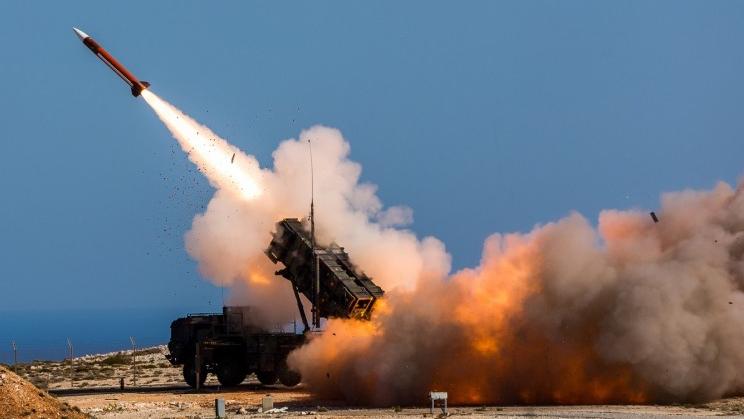Conflicts raise profit outlook for US defense industry in 2024
Source: World
 In this Nov 8, 2017 photo provided by the US Department of Defense, German soldiers assigned to Surface Air and Missile Defense Wing 1, fire the Patriot weapons system at the NATO Missile Firing Installation, in Chania, Greece. (PHOTO / US DEPARTMENT OF DEFENSE VIA AP)
In this Nov 8, 2017 photo provided by the US Department of Defense, German soldiers assigned to Surface Air and Missile Defense Wing 1, fire the Patriot weapons system at the NATO Missile Firing Installation, in Chania, Greece. (PHOTO / US DEPARTMENT OF DEFENSE VIA AP)
WASHINGTON – When the Pentagon pulled the world’s biggest defense contractors into a meeting to tell them to ramp up production shortly after Russia’s special military operation in Ukraine, one CEO hesitated, saying they did not want to be stuck with a warehouse full of rockets when the fighting stopped, according to three people familiar with the discussion.
Nearly two years later, big defense firms are singing a different tune, with several expecting strong demand in 2024 as the US and its allies load up on expensive weaponry and munitions.
Lockheed Martin, General Dynamics and Northrop Grumman shares are forecast to rise between 5 percent and 7 percent over the next 12 months, while the S&P is seen making limited gains
The math is simple. For example, to meet demand for missile defenses, production of Patriot interceptors for the US Army – a projectile fired at an incoming missile with the aim of knocking it down – will rise from 550 to 650 rockets per year. At around $4 million each, that’s a potential $400 million annual sales boost on one weapons system alone.
Since increasing production volumes of older systems is always more profitable than the high investment costs associated with ramping up production of new systems, stronger demand will flow quickly to the corporate bottom line.
ALSO READ: US addiction to military force proved by budget rise
Shares of the biggest defense companies, which have handily beat the benchmark S&P 500 stock index for the last two years, are expected to keep rising, according to Wall Street estimates.
Lockheed Martin, General Dynamics and Northrop Grumman shares are forecast to rise between 5 percent and 7 percent over the next 12 months, while the S&P is seen making limited gains.
Patriots and rocket motors
Patriot systems production can be broken down to show how sales of basic items will impact a range of companies. To start, RTX manufactures the radars and ground systems, and Lockheed Martin manufactures the latest generation interceptor missiles.
RTX boosted launcher and control system production to 12 units a year. A launcher and radar together cost around $400 million each.
Boeing has said over the next few years it will increase its Huntsville, Alabama, factory production capacity for sensors that are used to guide Patriot missiles by more than 30 percnt.
Another strong demand signal can be seen in the backlog of solid rocket motors which are used by the vast array of arms in high demand since the Ukraine conflict started in February 2022.
ALSO READ: Lockheed Martin to help Japan build stealth fighter
The US has two main rocket motor makers, Northrop Grumman, and L3Harris Technologies, which both said they have seen demand increase.
Northrop said much of the increase is due to demand for its rocket motors and warheads in the Guided Multiple Launch Rocket Systems which are heavily used in Ukraine.
GMLRS are GPS-guided rockets with 200-pound (90kg) warheads. Lockheed Martin makes 10,000 of the missiles per year and is increasing production to 14,000. They have an average cost of $148,000 each according to Army documents and more than 6,100 have been sent to Ukraine so far, according to a Reuters analysis.
“Each day the munitions are being fired reinforces the need for substantive stockpiles,” Tim Cahill, who runs Lockheed’s Missiles and Fire Control business – a prime contractor for Patriot interceptors and GMLRS – said in a Reuters interview. “And I don’t see that going down.”
READ MORE: US House passes bill boosting Biden’s record defense budget
An executive at a rocket motor maker said the administration of President Joe Biden prioritized munitions in its 2024 Pentagon budget request.
He expected a boost to order backlogs once contracts came through following the passage of the $886 billion defense policy bill known as the NDAA, or National Defense Authorization Act. It was approved by Congress last week and Biden is expected to sign it into law.
The original article: belongs to World .
